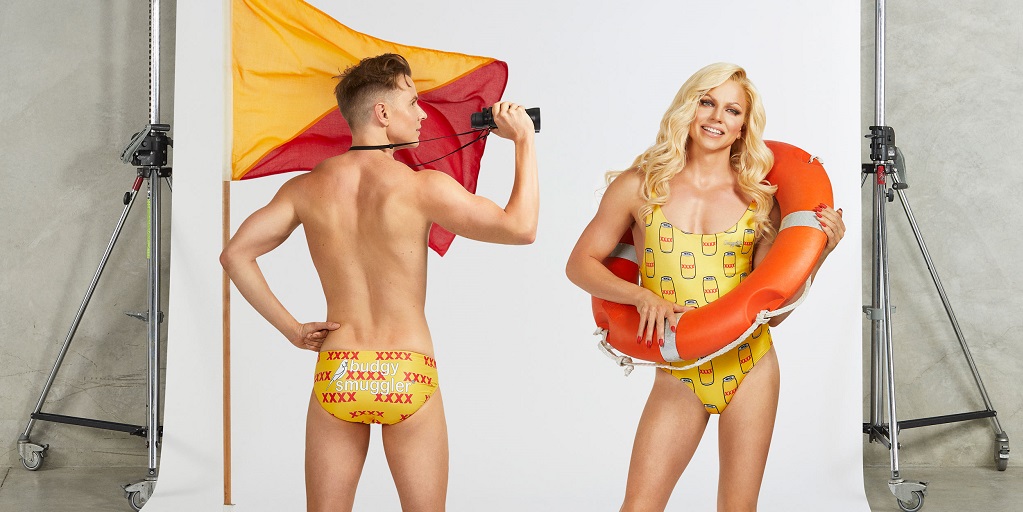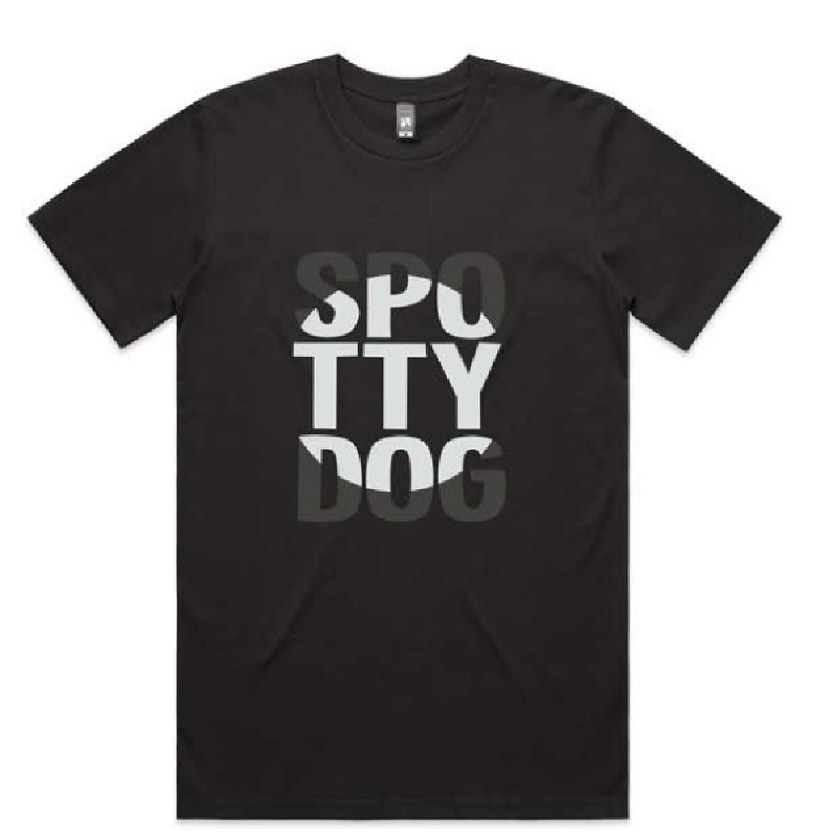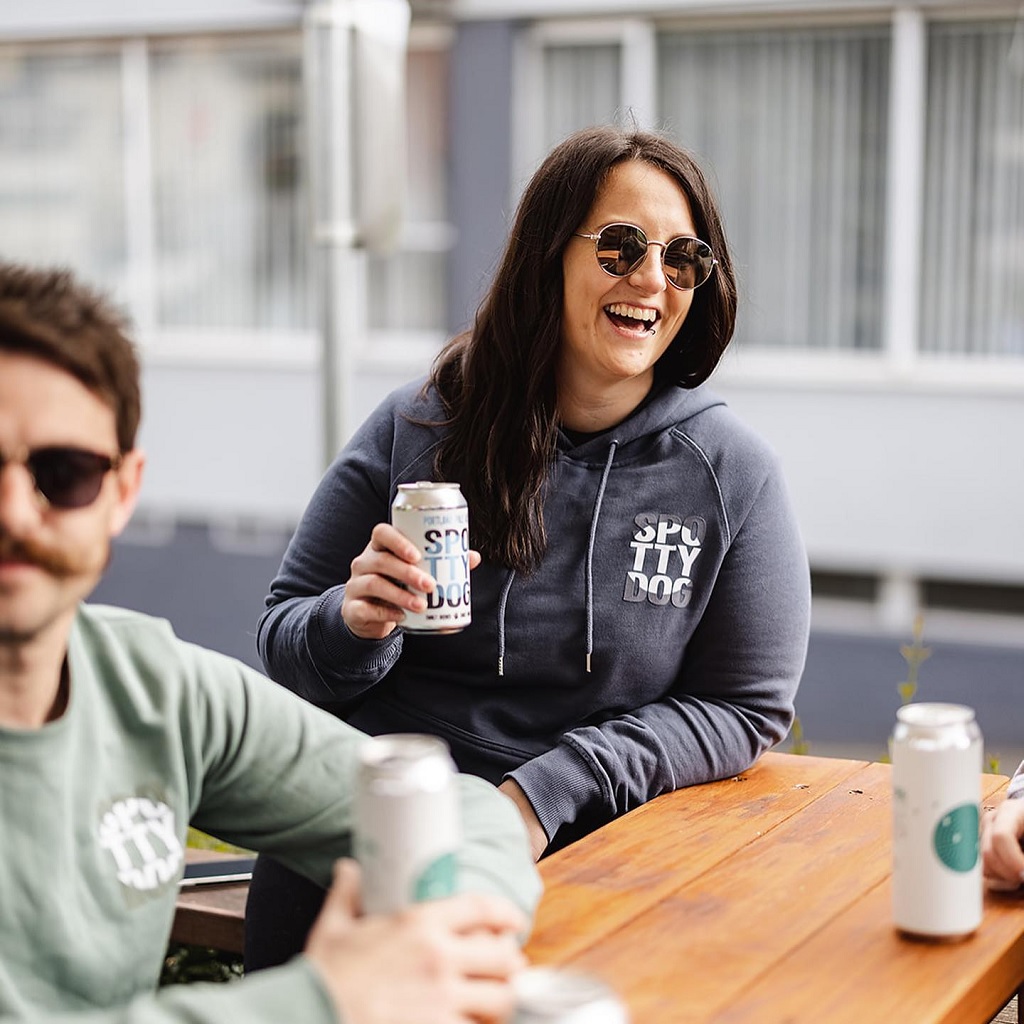
Unrealised opportunities in beer merch say industry experts

Brewery merchandise is a growing revenue stream for brewers, making walking billboards out of their customers, but there are missed opportunities out there according to industry experts.
Brewers rightfully focus on the beer they brew before their merch, and it has led brewers to travel the path of least resistance with beer merchandise, apparel an promotional items. But times are changing and brewers are paying more attention to what carries their branding what it says about their business, and by extension, their beer.
Joe Cook, formerly a general manager at Kegstar, has in the past year launched Beer Fans, a brewery merchandise and apparel marketplace.
“I see merchandise as an untapped opportunity for most breweries. People aren’t taking advantage of how important and valuable their brand is, considering how much time they put into can design,” Cook explained.
Cook said that the opportunity for merchandise goes beyond selling a few black t-shirts with badge logos, and should be considered as part of a brewery’s marketing spend.
“They have big growth rates year-on-year. Brewers, big ones particularly, spend between 8 and 14 per cent on marketing – around 8 if you’re massive mainstream, 14 per cent if you’re trying to develop a brand – but of that how much does merch contribute to that?
“Some breweries are taking it really seriously, they’ve hired people out of the fashion space that contribute to marketing. But for smaller breweries, it’s a resources thing.
“I surveyed a heap of breweries, and the overarching themes were that they just don’t have enough time but feel obliged to have merch. Which is why most people just go with a basic t-shirt with a logo on the back and left chest.
“You get into craft beer for the love of beer, that’s where your time, resources and energy go to – making beer – and retail is a tricky, and traditionally low margin space,” Cook explained.
However breweries, even the smaller ones, recognise the importance of merchandise, from Land & Sea’s cooler bags to Kaiju’s beach towels, Smiling Samoyed’s furry stubby holders and the XXXX budgie smugglers released this week.

In most cases, breweries already have the design capital to invest in good quality and even innovative merchandise, according to Emery Greer, founder of Thirsty Merchants, which supplies promotional items and printed apparel to the beer industry.
“Once you have a decent brand, that’s something you can work with. Look at Black Hops when they launched with the eggnog stout, that was their first outing and they hadn’t sold a single beer, but all the team still had a Black Hops t-shirt on.
“They were proud of what they were creating, and it’s a return on investment for anyone that has a decent brand.”
A question of quality
Klimt Donohoe, founder of Spotty Dog Brewers in Tasmania, said they went through a similar process to many in the industry.
“Over the years we’ve taken the same route as other brewers with regard to our merch, but switched it up this year. We used to focus on “get the logo on something as cheap as possible and then get it to customers”.
“Now we have a very serious focus on quality product and there’s a good reason for that. Our graphic designers presented us with a proposal to focus entirely on high-quality garments and finishes for our new rebranded range of merch.
“His proposal was that if we provide our merch as quality options with a focus on the finish people will value you them that way. A cheap hat gets thrown in the back of the car or forgotten at a table at a beer festival.
“A premium finished crew, in actual colours that men and women both want to wear that are in season/fashion will make people want to wear your brand and show it off….which is the whole point of the merch!”
Brewers are also looking at what their merchandise says about their brand. While reasonably-priced t-shirts are still a staple at Spotty Dog to ensure that no one was excluded by higher price points, Donohoe explained they are also premium finished by their merch company Brand Hustle.
“[Our designer] spoke about what cheap merch tells a customer about your brand. Pretty obvious link there!”
Opportunities with merch
The brewing industry can also take learnings and comparisons from other sectors such as the music industry, which is dominated by a company called Love Police.
“They have data on things like what sells at festivals, and it doesn’t matter if it’s Kanye or Taylor Swift or a local triple J artist, like in beer, black t-shirts sell the best – it’s not rocket science,” Beer Fans’ Joe Cook said.
“But they actually tried to tap into the beer world, and decided it was too hard and fragmented.”
While black t-shirts will no doubt always have a place in beer merch, many breweries are branching out, as the Spotty Dog example has shown.
Thirsty merchants’ Emery Greer said it was about creating a unique point of difference that was in-keeping with a brewery’s brand, as long as that is strong to begin with.
“That’s the key to being a brand and graphic designer – everything, for me, stems from the brand.
“That’s part of Thirsty’s success. We don’t just logo slap, we can take something and think about and evolve things a lot more.”
The key is to tie any merch into the brand – who the company is and how they want to be perceived.
“Places like Mountain Culture that produce some amazing beautiful merchandise. Because they are in a high tourism area in the Blue Mountains, they might go for really nice crew tops, embroidery, and have a strong colour palette because their brand is about colour.”
Greer also said that breweries were changing the way they thought about merchandise.
“Over the last three years it’s been a breath of fresh air, with the new colour palettes out there in merch and the seasonal changes.
“We’ve also noticed we’re doing more female cut t-shirts as well. Female beer drinkers and enthusiasts, no one catered to them before and we started to get so many people at festivals asking.”
Sustainability
Buying locally produced goods has been a hallmark of the independence movement, whilst brewers have also been looking at ways to be more sustainable and reduce waste in the brewery through CO2 recovery systems, using spent grain and more.
The fashion world is also engaging with issues of sustainability, in particular “fast fashion” and sourcing, but there is a long way to go.
“My attitude towards it is that you do what you can to be sustainable, and the things you can’t make sustainably, make it good quality and use it until it breaks,” said Cook.
“Not many breweries buy into fast fashion but only a few breweries can afford to produce t-shirts for specific beer or event.
In October 2021, Australians spent $2.2 billion on clothing but only a tiny fraction of this revenue accounted for locally-made products, let alone locally-sourced raw materials. Like many developed countries, Australia is heavily reliant on imported clothing.
“Australia is a small country in the grand scheme so there are fewer suppliers of everything, and anything bespoke or customised it’s easier to outsource overseas,” explained Cook.
But it may not be this way forever, but in the short and medium-term, costs and profit margins remain a major factor.
“The beauty of manufacturing hubs is that they are following a global trend of being more responsible, they will give you the opportunity to create things that are sustainable or not, and that’s price dependent.
“We’re not quite there as a world or a community where sustainability is cost-neutral, it’s still at a premium [to buy sustainability].
“It’s getting closer and as long as we’re asking it will get manufacturers moving, people give a shit these days.”
Thirsty Merchant’s Greer agreed that there was a movement towards more sustainable and ethical sourcing.
“There’s a lot happening in that area, but there’s not much on offer, a couple of core brands that offer organic sustainable and well-manufactured products, but obviously that has a knock-on effect to the cost. For the base product it becomes an issue, add print on top, delivery costs, you need to sell it at a premium price point to get a good return.”
There are moves towards ethical and sustainable clothing in the merch industry, and a huge proportion of apparel merchandise companies use AS Colour, a New Zealand brand that is transparent about its sourcing, and Greer says the high quality of the brand’s products means less wastage and longer-term use.
“I’m still wearing AS Colour shirts from five years ago, but they’ve held their shape, the print has held up, so it ticks all the boxes. Cheaper shirts, for giveaways, will start to wear out after 100 washes – so you get what you pay for.”
Merch models
Beer merchandising on any scale comes with challenges, especially when it comes to printing decisions and ordering, but like with can printing, there is more than one way to skin a cat when ordering beer merch.
Beer Fans, for instance, is more of a marketplace.
“We have some tech that taps into ecommerce platforms that replicates what breweries have on their websites, so we’re not undercutting the brewery, we’re just replicating it.
“What we’re hoping to do is use scales of economy to lower the cost for all breweries by putting all that purchasing power together. I can commit to 10,000 t-shirts from a supplier, and then overall costs can come down for breweries – some are doing really short runs and as a result, making less than 5 bucks on a hoodie.
“That gives them more flexibility, the opportunity to do more styles and create some worthwhile margin.”
Thirsty Merchants meanwhile do a lot in-house, including printing, and have their own factories in China.
“We’ve brought a lot of production in-house in the last 12 months, and have a DTG (direct-to-garment) printer,” explained Greer.
DTG printers are more efficient than traditional screen printing methods and reduce waste, but come at a higher price point due to ink costs, he explained.
“We weigh up the best application method by looking at the design work required. Screen printing holds up and gets better with time and DTG is at that same level.
“There’s also heat press vinyl transfers you can get, but we avoid those because we want them to have greater longevity.”
According to Greer, DTG printing is where apparel printing is headed.
“DTG is incredible, the inks last longer than material, it reduces overheads and costs and minimises waste, and it uses all water-based soluble inks which is better for the environment so it ticks a lot of boxes for us.”
It is clear that merchandise, like beer, requires some time and effort to be made in its making.
“I really believe that 10 to 20 per cent more effort [invested in merchandise] would have a tenfold effect in a brewery’s business,”” said Beer Fans’ Joe Cook.
“The beauty of craft beer in part is that people aren’t just fans because the beer is amazing, they buy into the whole ethos and lifestyle. And that’s why people are willing to wear a brewery’s merch, not just that they like their beer.”
“That’s what makes breweries unique. They are diverse and so are people, there’s something for everyone, and it should be the same with merch.”






